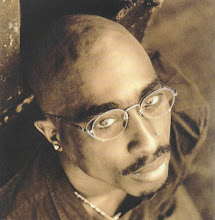
SINCE 1954, liberal and conservative justices have disagreed about the central meaning of Brown v. Board of Education. Was the purpose of Brown to achieve a colorblind society or an integrated one? Last week, in its 5-to-4 decision declaring that public schools in Louisville and Seattle can’t take explicit account of race to achieve integration, the
Supreme Court came down firmly on the side of colorblindness. Despite some important qualifications by Justice Anthony Kennedy, at least four conservative justices made clear that they believe that nearly all racial classifications are unconstitutional.
The lawyers who won the Supreme Court case predicted that it would have as dramatic an effect on American society as the original Brown case did. “These are the most important decisions on the use of race since Brown v. Board of Education,” Sharon Browne, the principal lawyer for the conservative Pacific Legal Foundation, declared in a press release. “With these decisions, an estimated 1,000 school districts around the country that are sending the wrong message about race to kids will have to stop.”
But some legal scholars on both sides of the political spectrum, and of the affirmative action debate, question this assessment. They doubt that this case will transform society as dramatically as Brown did. And some of them question whether even Brown was as singularly influential in transforming society as many have claimed during the last half-century.
The conventional wisdom about Brown holds that it was more responsible than anything else for the integration of schools. “Brown really did transform society by stopping de jure segregation, and without Brown, schools would look very different,” says David J. Armor, a conservative scholar at George Mason University.
But some liberal scholars have challenged that heroic assessment. In “From Jim Crow to Civil Rights,” Michael J. Klarman argues that it was a political commitment to integration in the 1960s, not the Brown decision in the 1950s, that led to meaningful integration.
“Brown didn’t transform society very much, and to the extent that it did it was indirect,” says Mr. Klarman, who is a law professor at the
University of Virginia. “Brown brought out the worst in White Supremacy, and Northerners were appalled by the police dogs they saw on television, and that advanced the civil rights movement.” He argues that meaningful desegregation didn’t occur until the Johnson administration’s Justice Department became committed to enforcing the Civil Rights Act of 1964, and the Department of Health, Education and Welfare threatened to cut off financing to school districts that refused to integrate.
Professor Klarman said he believed that just as the court couldn’t bring about integration on its own in 1954, so it won’t be able to mandate colorblindness on its own today. “Just as Brown produced massive resistance in the South and therefore had little impact on desegregation for a decade, this decision is going to be similarly inconsequential,” he says. “This affects only the tiny percentage of school districts that use race to assign students, and even in those districts, like Louisville and Seattle, it won’t be consequential because there are so many opportunities for committed school boards to circumvent it.”........



























No comments:
Post a Comment